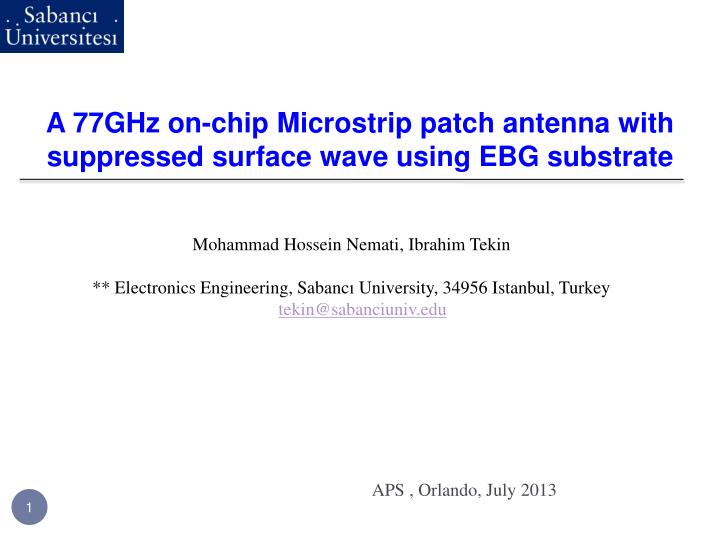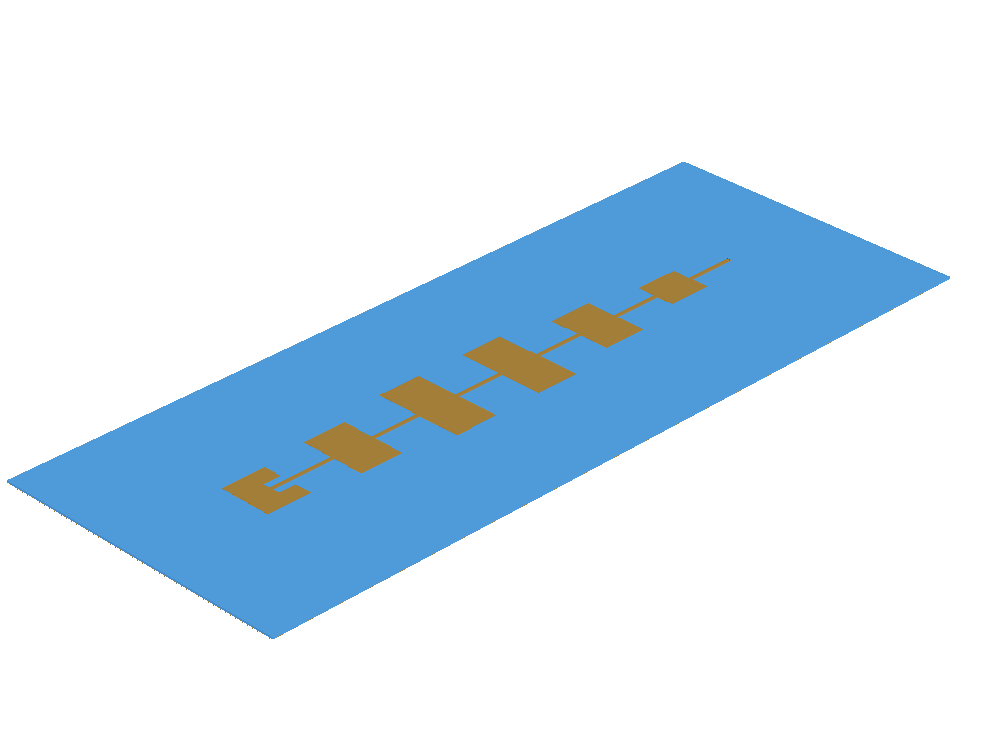

Moreover, the antenna array parameters are successfully optimized with a numerical experimentation technique using a 3D full-wave EM simulator. Experimental results show that more than 30 dB isolation between the array elements is obtained using an array of CSRR-based DGS. Significant reduction of the electromagnetic (EM) mutual coupling is achieved between array elements with a reduced edge-to-edge spacing of 7.5 mm (0.22 λo). The CSRRs-based DGS acts as a bandstop filter between the array elements and operates in the same desired frequency band of the array at 9.2 GHz. The CSRRs-DGS is easily etched on the ground plane between the array elements. N2 - In this paper, complementary split ring resonators (CSRRs) defected ground structure (DGS) is introduced to suppress surface waves and to reduce the mutual coupling between E-plane coupled two elements of a microstrip patch MIMO antenna array. The authors would like to thank the ERI, Egypt, for the help during CST simulation process and Kyushu University for supporting the facilities for the measurements of this research. This work is supported by the mission department of the Egyptian Ministry of Higher Education (MOHE) and E-JUST. T1 - Mutual coupling reduction in MIMO patch antenna array using complementary split ring resonators defected ground structure

Good agreement is found between the simulated and the measured data.", The proposed design has been simulated and validated experimentally.
#Surface waves patch antenna array verification#
The design of the proposed array is fabricated and measured for verification purposes. Good agreement is found between the simulated and the measured data.Ībstract = "In this paper, complementary split ring resonators (CSRRs) defected ground structure (DGS) is introduced to suppress surface waves and to reduce the mutual coupling between E-plane coupled two elements of a microstrip patch MIMO antenna array. Kulke, et al.In this paper, complementary split ring resonators (CSRRs) defected ground structure (DGS) is introduced to suppress surface waves and to reduce the mutual coupling between E-plane coupled two elements of a microstrip patch MIMO antenna array. A full-wave analysis must be performed to understand the effect of mutual coupling on the overall array performance. As a result it is not possible to replace the isolated element pattern with an embedded element pattern, as shown in the Modeling Mutual Coupling in Large Arrays Using Embedded Element Pattern example. Since this is a small array (8 elements in 2x4 configuration), the individual element patterns in the array environment could be distorted significantly. However, analysis of realistic arrays must also consider mutual coupling effect. From the comparison, it can be seen that using the isolated patch element is a useful first step in understanding the effect that a realistic antenna element would have on the array pattern. The example compares the patterns from the two arrays to show the design tradeoff. This example starts the design of an antenna array for FMCW radar with an ideal cosine antenna and then uses a patch antenna to form the real array. The patch-element array has a significant backlobe as compared to the cosine-element array. The figures show that both arrays have similar pattern behavior around the main beam in the elevation plane (azimuth = 0 deg).


 0 kommentar(er)
0 kommentar(er)
